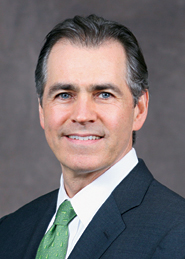Equities trading volume in the first quarter disappointed many industry pros. However, they see several bright spots that could juice volumes the rest of the year.

First, the bad news. On March 28, just 5.973 billion shares traded. It was the slowest day in the markets this year.
It also wrapped up a quarter that saw a 7 percent drop in volume over the previous year. What disappoints the industry is that the first quarter typically has been the most active for the year over the past few decades.
See Chart: Volumes Up and Down
No doubt about it, the equities markets are down, said one trader at a large bank. "From a trading standpoint," he said, "we see volumes down, just like everyone else."
And they’re down more than the industry expected. So much so, in fact, that some have lowered their trading volume estimates for the rest of the year.
"I think the fear in everybody is: If this is what we see the Monday of the last week of the first quarter, then what will we see in the middle of the second or third quarter?" said Michael Lynch, head of Americas equity execution services at Bank of America Merrill Lynch.
Here’s what the numbers say. By the end of March, a daily average of 7.9 billion shares has traded so far this year. That’s a decline of 7 percent from the 8.5 billion shares ADV that traded last year. And it’s a drop of almost 20 percent from the market high ADV of 9.8 billion seen in 2009.
Why has this happened? Shouldn’t equities volume climb higher? Given the key factors and trends affecting the markets, the answer is no. Less market volatility and fewer active players in domestic equities these days have all boiled down to a period of lower volume.
Smooth Sailing
Less volatility in the marketplace is a big factor. Volatility greatly influences volumes, as traders find more opportunities for profits when prices whipsaw. And the financial crisis triggered the epic volatility that pushed volume to record levels in 2008 and 2009.
But the financial crisis also introduced a high degree of uncertainty, as banks faltered and the federal government had to step in to save them. No such shocks to the financial system exist today.
There have been no structural drivers–such as those seen in 2008–to propel volatility and carry volumes to the same levels. Even events such as the conflicts in northern Africa and the earthquake in Japan only raised volatility and volume for short periods of time, said Eric Noll, speaking on a recent panel to members of the Security Traders Association of New York.
Besides low volatility, fewer market players have been active trading domestic equities. This includes long-only investors, hedge funds, high-frequency and other short-term alpha types.
For starters, the hedge fund industry has undergone tremendous change over the past few years. The financial crisis left fewer players and more regulations in its wake. The largest hedge funds that survived the consolidation have gotten even larger, BofA Merrill’s Lynch said. But though hedge funds have been amassing assets–to the point where overall AUM for the industry has about recovered to pre-crisis levels–they’re not as active in the markets, he added.

That means they’ve been trading less. According to numbers assembled by one broker at another shop, hedge fund share of the institutional business dropped from 45 percent of the market in 2008 to 39 percent in 2010. It dropped even further for the first two months of 2011, accounting for just 24 percent of the business. The long onlys during that same period were kings of the hill once more, representing 76 percent of the trading.
Yet, despite the rise of the long onlys, trading volume still wallowed. "The loss of the hedge fund business could not be offset by the increase from the long onlys," one industry exec said.
Welcome Back
Fortunately, the long onlys have gotten more active as a result of inflows into domestic equity mutual funds. Data from the Investment Company Institute show that four years of outflows from domestic equities appear to have abated.
For the year-to-date through March 30, mutual fund investors contributed $14.5 billion to domestic equities, ICI numbers show. For the previous four years, much of their assets left domestic equities and were reallocated to foreign equities and other asset classes–particularly fixed income.
See Chart: Mutual Fund Flows
But this year, up until the earthquake in Japan, stock selection among long onlys was up big, Lynch said. "The fundamental players became much more involved," he added.
Another group that’s been cutting back has been high-frequency traders. And when a group that industry analysts estimate comprises roughly 50 percent of all volume trades less, the entire industry feels the effects.
Again, low volatility has played a role. Highly quantitative, very short-term alpha traders have found it difficult to make their margin-thin profits when stocks have been steady, Lynch said.
Less Breeds Less
In addition, where HFTs and other quantitative players are concerned, a lack of liquidity begets a lack of liquidity. This is because any lack of core liquidity that fundamental investors supply has a multiplier effect on high-speed traders, Lynch said. This effect works so that they become much more active the more "core volume" there is. The reverse is also true, he added.
"We’re now seeing the downside to that [dynamic]," Lynch said. "If there’s a little less core volume in the marketplace every day, and there’s lower VIX as well as small, but meaningfully higher fees, then some of these HFTs might be squeezed out, in terms of profitability."
The fees Lynch referred to are the Securities and Exchange Commission’s Section 31 fees. It uses the proceeds to pay for the costs of regulating the trading industry.
On Jan. 21, the Section 31 fee rate for securities transactions on exchanges and over-the-counter markets will increase from its current rate of $16.90 per million dollars in transactions to $19.20 per million dollars in transactions. For HFTs, who look to make margin-thin profits on many trades, the 13.6 percent jump in fees will hurt, Lynch said.
For the Future
Also, Citigroup, whose stock is estimated to comprise roughly 6 percent of the market on any given day, announced that early next month it will effect a 10-to-1 reverse split of its shares. The reverse split will make a stock with a low price and pronounced degree of liquidity far more expensive and less liquid. And active traders in the name, such as HFTs, would then be far less likely to use Citi for, say, exchange rebate-capture strategies.
On a bright note, industry watchers have been pleased to see positive mutual fund and hedge fund flows. Among hedge funds, the flows represent new allocations to the industry and not just capital moving from one hedge fund to another, said Neil Sherman, global sales manager for the prime brokerage and equity finance business at JPMorgan.
Also, corporate activity is high. This includes an active new issuance calendar–both initial public offerings and follow-on transactions–and an increase in mergers and acquisitions of all sizes, Sherman said. Private equity firms have also been looking to exit some of their holdings through the equities markets.
"All of these [factors] could give rise to additional trading and larger levels of investor activity in equities and other products," Sherman added.



